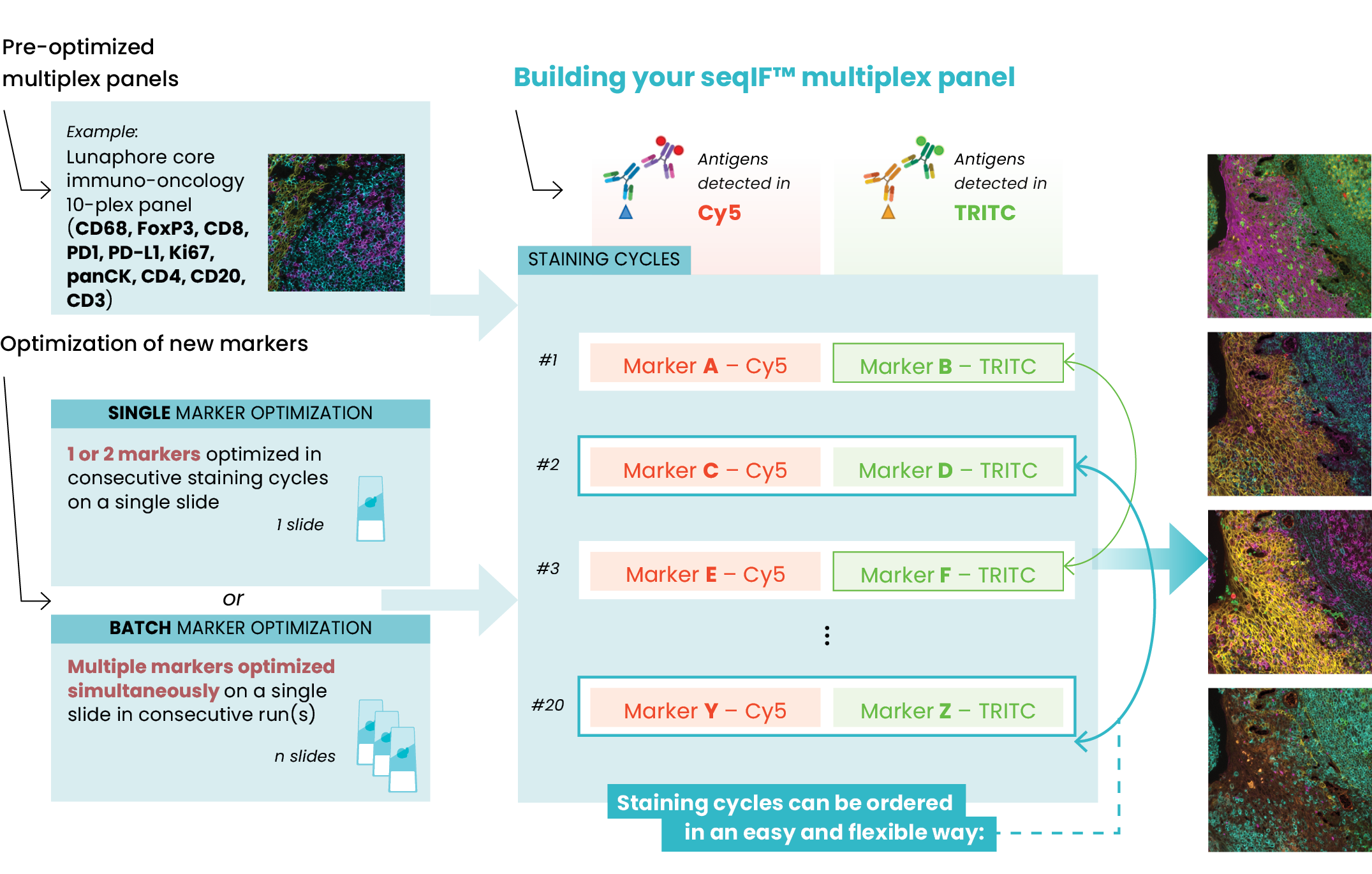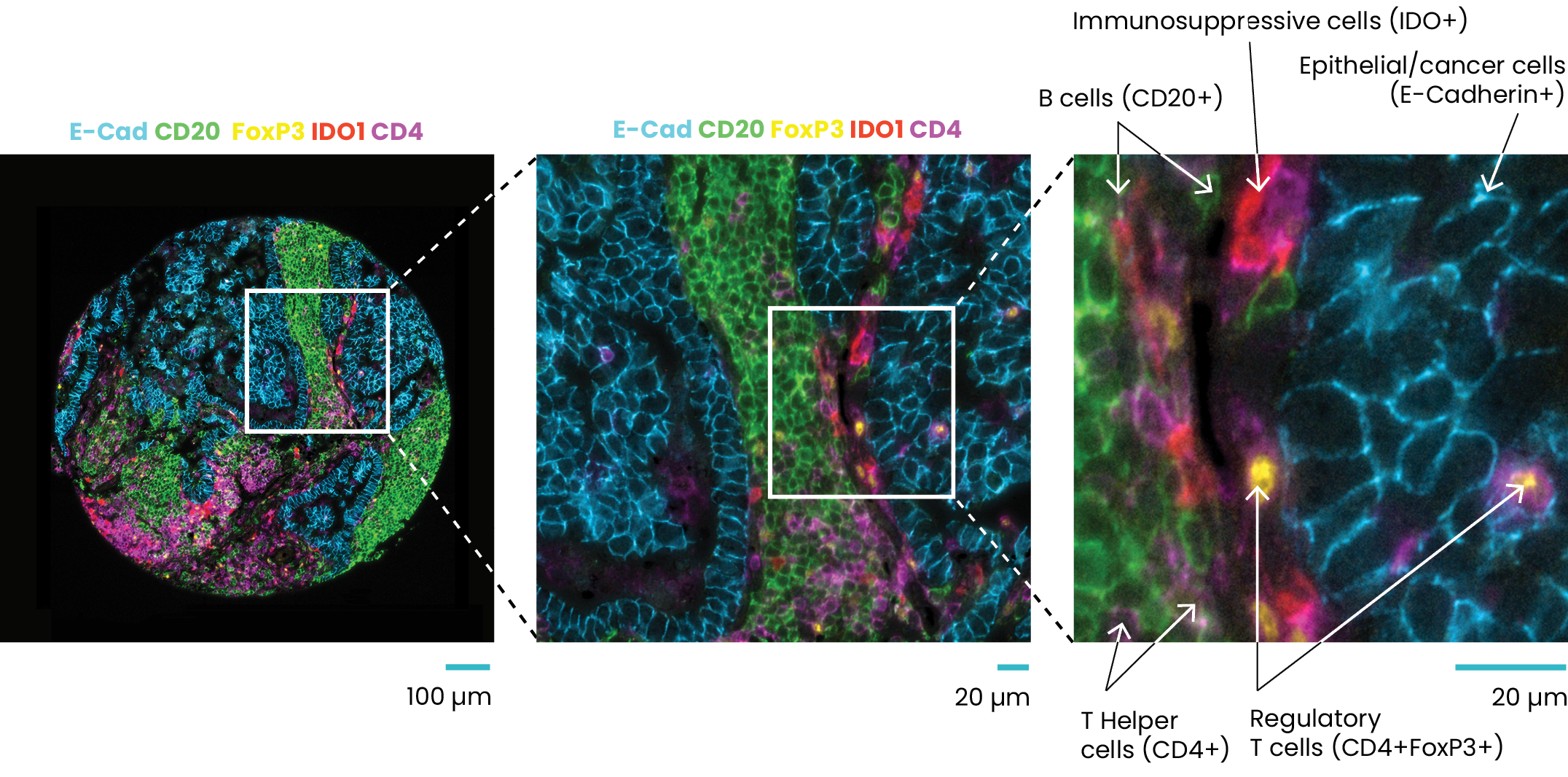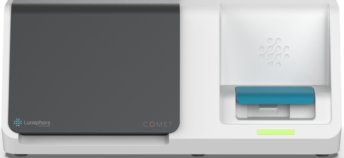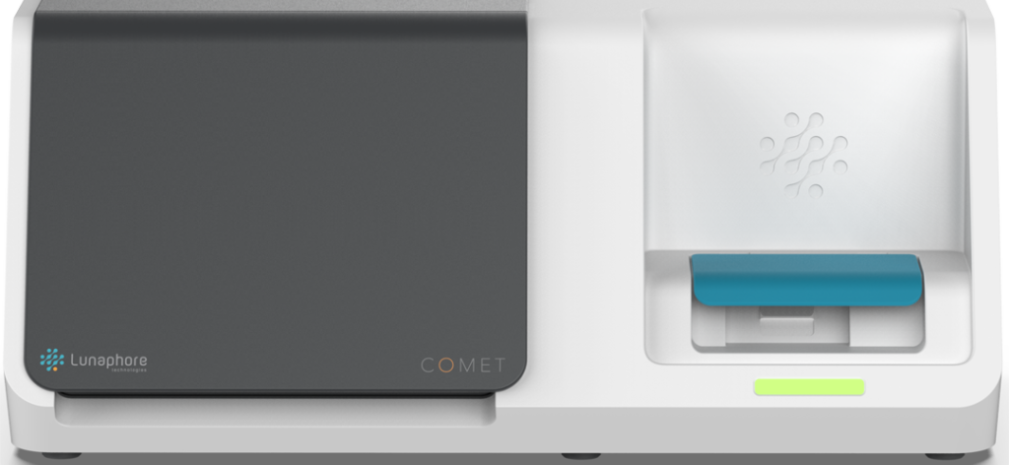Sirona Dx is the first CRO in North America to provide access to the COMET™ platform from Lunaphore.

Figure 1. Hyperplex panels can be easily developed on COMET™ with guided protocols for optimization and flexible choice of marker positioning.

Figure 3. Single-cell resolution achieved with 40-plex staining on COMET™. The left panel shows five markers detected on a TMA of lung adenocarcinoma with lymph node metastasis. The middle and right panels show a selection of regions of interest (ROIs) to identify different cell types.
Comprehensive End to End Service Includes:
- Assay customization
- Multiplex Assay Optimization
- Slide Staining
- Advanced Bioinformatics Analysis
Applications
- Biomarker discovery and development
- Immuno-oncology
- Inflammatory and autoimmune diseases
- Neuro-immunology
- Characterization of tissue microenvironment
- Therapeutic response
- Drug safety and toxicity
- Oncology
Please reach us at info@sironadx.com for more information


